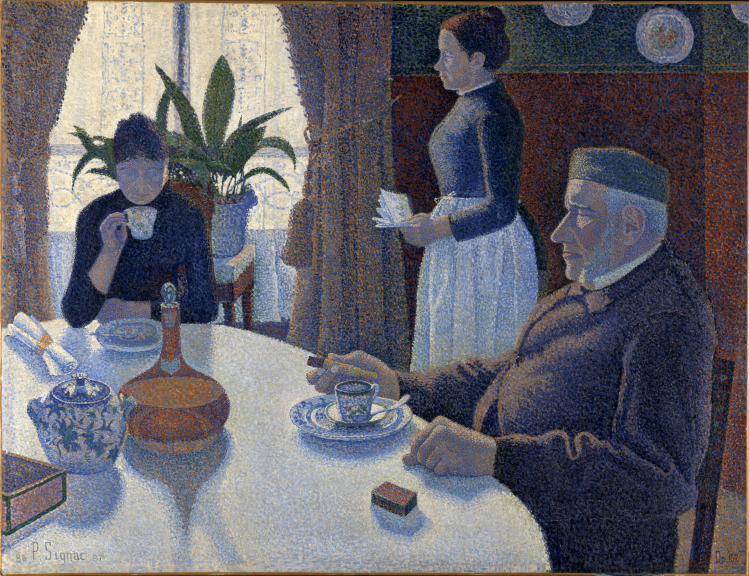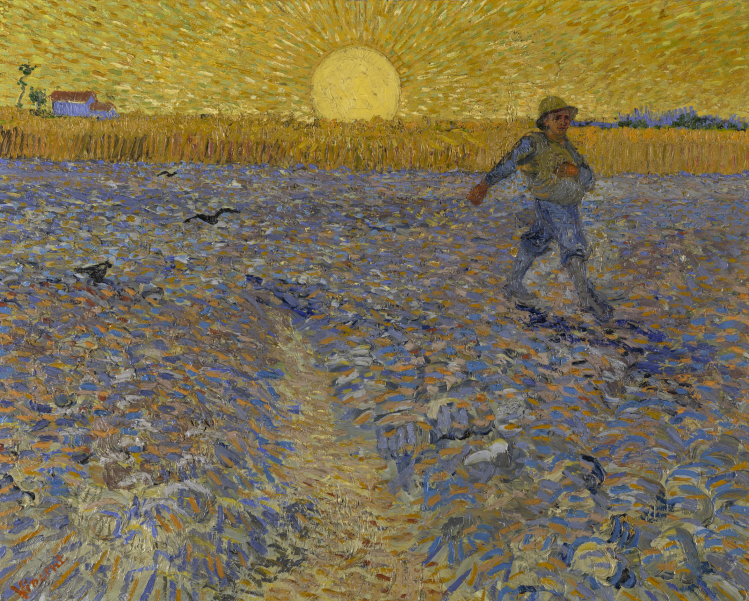Post-Impressionism

Paul Cézanne, Hortense Fiquet, 1877 (detail).
Post-Impressionism
In 1910 Grafton Galleries in London hosted an exhibition entitled “Manet and the post-Impressionist”, which showed works of art clearly illustrating the crisis suffered by the Impressionist movement. In fact the movement had lost its early enthusiasm.
On that occasion, English art critic Roger Fry coined the term “Post-impressionism” to describe the artists, who were inspired by innovative Impressionist ideas, but at the same time they reached a new artistic style.
But what is exactly Post- Impressionism?

After some vivacious years, the Impressionists applied to their works techniques and themes that had already been experienced, avoiding any introduction of new elements.
On top of that, some critics still considered Impressionism a movement characterized by the limitation to portray only what eyes could see.
At that moment Post-Impressionism emerged. But it wasn’t a new art movement.
What is Post-Impressionism?
An exhibition devoted to Post- Impressionist artists has been housed in Verona lately, displaying paintings very different from one another, which identify a period of momentous changes.
The term “Post-Impressionism” doesn’t define a cohesive group of artists, with an recognizable style, but it combines in one group different artistic experiences, that developed in France after Impressionism.
All Post-Impressionist artists sprang from the Impressionist ideas, but they evolve into autonomous styles, achieving very different results.
Whereas the Impressionists depicted reality as the artist could see it, the Post-Impressionists added the point of view of the artist. Therefore, their pieces of art were a subjective representation of the reality (and no more an objective representation), showing new potentialities in art and painting.
So, the term “Post-Impressionism” is a label that gathered together a varied group of late 19 th-century and early 20 th-century artists, including Vincent Van Gogh, Pierre Bonnard, André Derain, and Henry de Toulouse-Lautrec.
During Post-Impressionism artists began communicating directly to the spectator, without considering the problem of the imitation of reality, laying the basis of a complete revolution in painting and in the role of the artist, which can been see even nowadays.
As I’ve already written in a post, George Seurat is the key artist of Post- Impressionism. He invented the Pointillism and paved the way for various stylistic categories.
I’m going to dedicate a post to Pointillism as soon as possible.

Vincent Van Gogh, Il seminatore, 1888 ca.
Follow me on:
About me
In this blog, I don't explain the history of art — I tell the stories that art itself tells.


